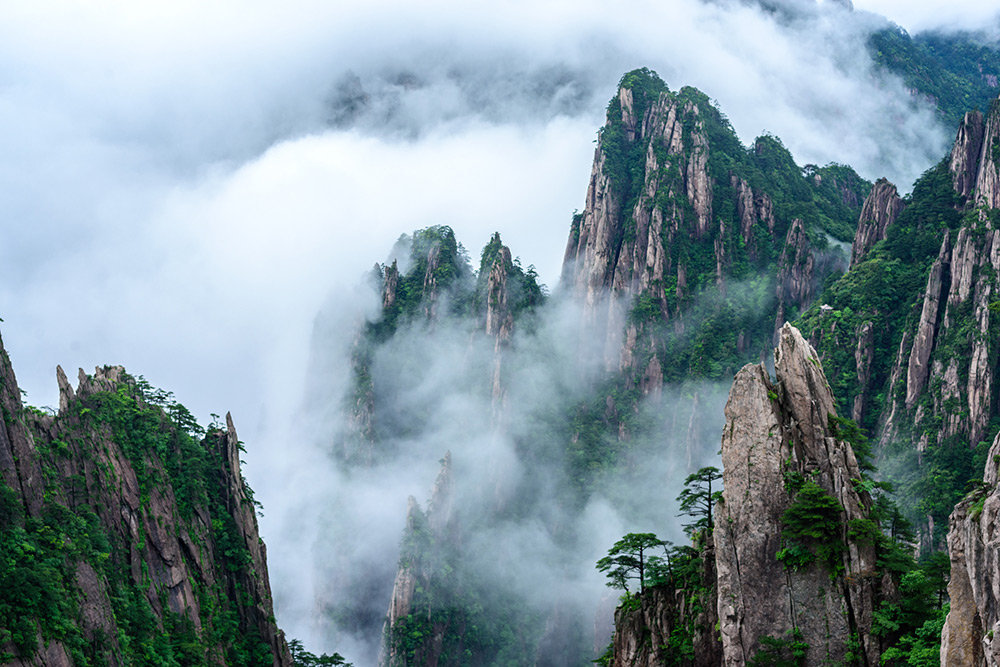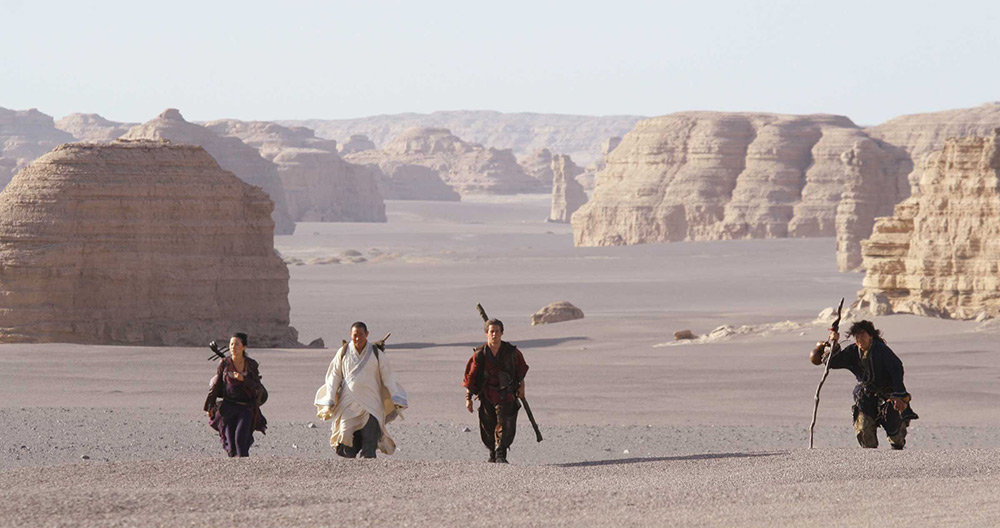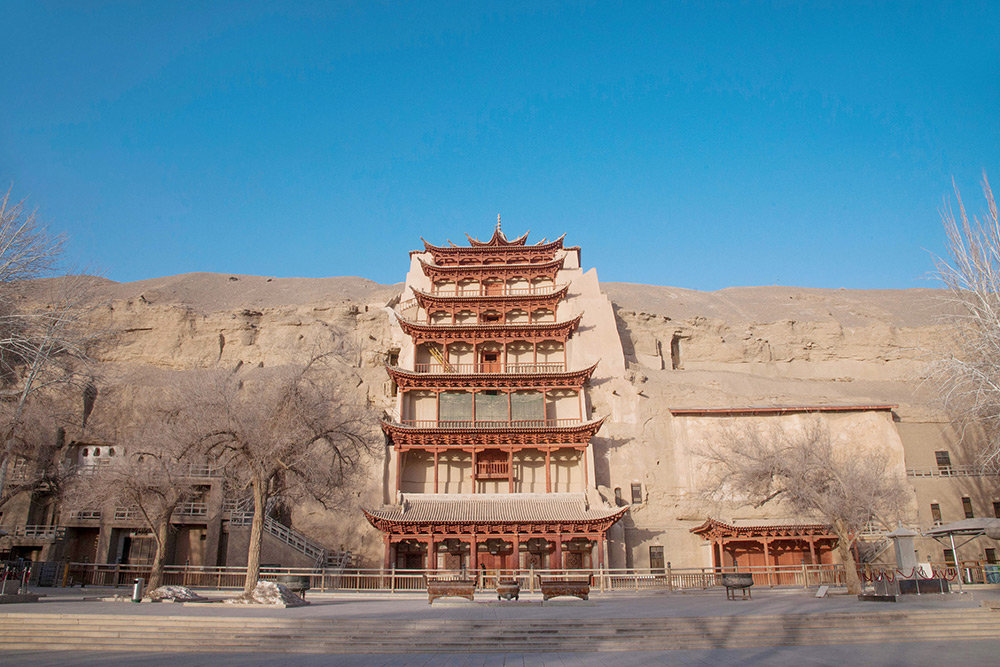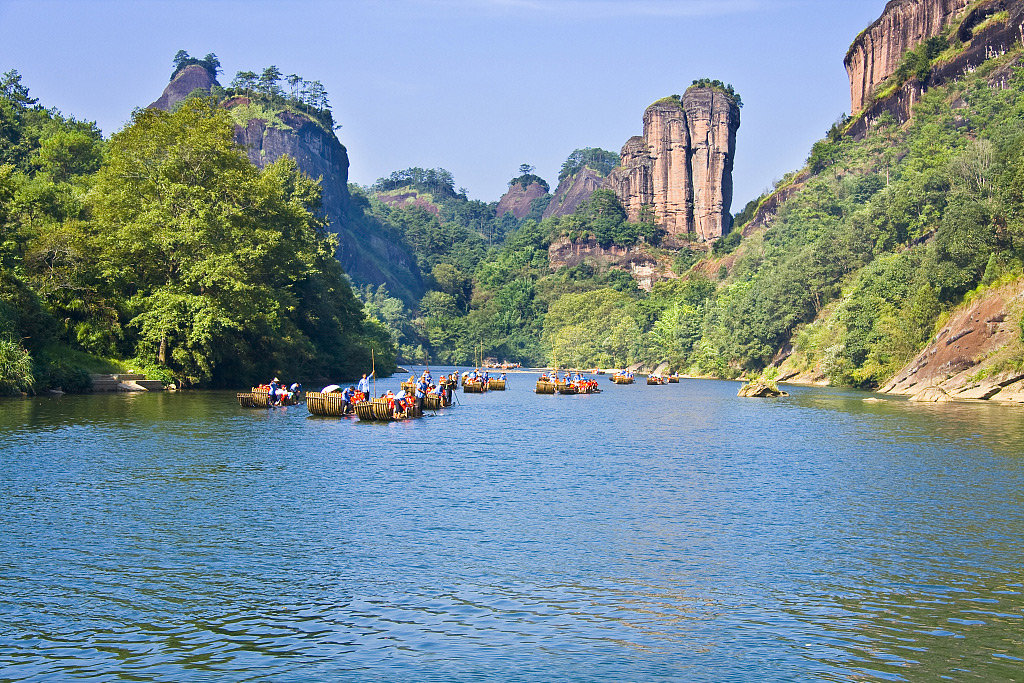Once upon a punch and a poem, two legendary martial artists—Jackie Chan and Jet Li—joined forces in a magical kung fu adventure called The Forbidden Kingdom (2008). But beyond flying kicks and ancient scrolls, the real stars of this film are the breathtaking landscapes that cradle the story like soft folds of silk.

If you’ve ever watched The Forbidden Kingdom and wondered, “Where in China is that glowing desert? That misty mountain? That winding river?”—you’re in for a gentle, scenic surprise. Because the movie isn’t just action-packed; it’s also a quiet love letter to China’s most magical filming locations, from Dunhuang’s desert grottos to Huangshan’s sea of clouds to Wuyishan’s lush tea valleys.
Let’s follow the kung fu footprints and discover the dreamy filming locations that brought this East-meets-West martial arts fairy tale to life.
Dunhuang, Gansu: Where Scrolls Whisper and Sand Dunes Sing
In The Forbidden Kingdom, scenes of ancient monks and spiritual secrets unfold under a desert sun. These scenes were filmed in Dunhuang, a historic oasis town on the edge of the Gobi Desert, famous for one of China’s greatest cultural treasures: the Mogao Caves.

Carved into a cliff along the ancient Silk Road, the Mogao Caves hold hundreds of Buddhist murals, sculptures, and manuscripts—some over 1,000 years old. The mystical air and sunbaked earth gave the film its golden light and timeless feeling. In real life, walking through the caves feels like drifting through pages of a painted scroll.
Outside the caves, the singing sand dunes and the crescent-shaped Yueya Spring create a surreal desert backdrop. Filmmakers chose Dunhuang not just for its beauty, but for its blend of art, religion, and ancient trade routes—perfect for a kung fu quest filled with scrolls, monks, and dusty secrets.

Huangshan, Anhui: Where Clouds Float Beneath Your Feet
When the characters in The Forbidden Kingdom journey through ethereal mountains—where pine trees twist dramatically and stone steps vanish into mist—they’re walking through Mount Huangshan, one of China’s most iconic and poetic landscapes.

Located in Anhui Province, Huangshan (Yellow Mountain) is known for its “Four Wonders”: strange-shaped peaks, seas of cloud, hot springs, and ancient pine trees. It’s been painted by scholars, whispered about by poets, and climbed by dreamers for centuries.
In the film, Huangshan’s jagged granite spires appear during key moments of meditation and martial training. The mountain’s atmosphere is quiet and mysterious—just right for scenes where kung fu becomes not just movement, but philosophy.
Climbing Huangshan in real life feels like entering a living ink painting. Stone steps carved into cliffs, occasional teahouses, and vistas that stretch into the sky—it’s no wonder filmmakers fell in love with it.
Wuyishan, Fujian: Bamboo Rafts, Tea Leaves, and Misty Kung Fu
In one of the film’s softer, greener sequences, our heroes travel along winding rivers and deep valleys wrapped in mist. These scenes were filmed in Wuyishan, a UNESCO-listed mountain range in Fujian Province, known for its calm waters, ancient rock formations, and legendary Da Hong Pao tea.

Here, rivers curve like brushstrokes and cliffs rise like sleeping dragons. It’s the kind of place where a kung fu master might appear from behind a boulder or a scroll might wash ashore from another world. The Nine-Bend River (九曲溪) winds between red rock walls, and tourists can float downstream on traditional bamboo rafts, just like the characters in the film.

Wuyishan isn’t only beautiful—it’s peaceful. You can sip tea grown on the cliffs, listen to the wind in the bamboo, and even practice a few quiet kung fu moves of your own.
A Kung Fu Fairytale with Real-Life Roots
While The Forbidden Kingdom may be a fantasy, its roots are grounded in real Chinese culture, geography, and martial arts traditions. The film gently introduced global audiences to Chinese folklore—Monkey King mischief, immortality scrolls, Taoist temples—but it also quietly highlighted the country’s breathtaking scenery.
Each location was chosen not just for its beauty, but for the way it feels:
- Dunhuang whispers of ancient wisdom.
- Huangshan floats between dream and reality.
- Wuyishan hums with nature and quiet strength.
For travelers, these aren’t just places on a map—they’re doorways to stories, to silence, to slow walks and deep breaths.
Planning Your Own Journey Through the Forbidden Kingdom
If you’re a traveler with a soft spot for cinema, kung fu legends, or China’s poetic landscapes, you can visit each of these places today. Here’s a gentle idea of how:
- Fly into Lanzhou or Jiayuguan to reach Dunhuang, and explore the Mogao Caves, Echoing Sand Mountain, and Crescent Lake.
- Take a high-speed train or bus to Huangshan, and spend a couple of days hiking among the clouds and staying in a traditional guesthouse.
- Travel to Wuyishan by rail from Fuzhou or Xiamen, and drift on a bamboo raft through scenery that once held flying warriors.
Each destination is unique, and yet they all share that cinematic calm—the kind that makes you pause, breathe, and maybe try a kung fu stance for the camera.
Where Action Meets Elegance
The Forbidden Kingdom may be remembered for the moment Jackie Chan and Jet Li finally sparred, but for many of us, it’s the sweeping rivers, golden caves, and misty mountains that stay in our minds long after the credits roll.
So, if you’ve ever wanted to step into a kung fu fairytale, you now know exactly where to go. Just pack your curiosity, your hiking shoes, and maybe a scroll or two.
Would you begin your journey in the desert, the clouds, or the tea valleys?
Contact us today to craft your dream China adventure!

